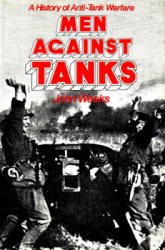As archaeology has evolved, so have ideas about the nature of archaeological inference and the appropriate use of ethnoarchaeology. Ethnoarchaeological data may be used as analogy, in which the archaeologist concludes that one thing (the prehistoric culture) is like another thing (the recent or modern culture) based on some observed similarities in material culture. The archaeologist may then associate the material culture with less tangible aspects of culture in the recent or modern group, and project those aspects onto the prehistoric group. In ethnoarchaeology as first defined by Fewkes and in the direct-historical approach, ethnographic analogies were often used uncritically; because of presumed cultural continuity, analogies between ancestral and descendent cultures were assumed to be valid without testing. Robert Ascher expanded use of these analogies in 1961 by arguing that analogies can be drawn between cultures that adapted to similar environments in similar ways.
The New Archaeology emphasized testing hypotheses with archaeological data, and uncritical analogies were subsequently challenged. Ethnoarchaeology was often used instead as a source of testable hypotheses, as advocated by Patty Jo Watson. Robert Kelly’s The Foraging Spectrum illustrates this perspective. It combines ethnoarchaeological research with other hunter-gatherer studies and may not be ethnoarch-aeology itself, but it was written primarily for archaeologists who need relevant anthropological theory to create testable archaeological models. (Kelly’s recent work studying mobility and site layout among the Mikea of Madagascar is more clearly ethnoarcha-eology as it is defined here.) Hypotheses should not be generated solely from data from living people, however, as pointed out by ethnoarchaeologists such as Martin Wobst and Michael Stanislawski. The universe of possible explanations should not be restricted to what has been observed in recent human behavior; if it is, we will never see how the past may differ from the present.
Ethnoarchaeology has also served to point out problems in interpretation, either with overlooked variables or unexplored alternatives. John Yellen has called this the ‘spoiler approach’ and notes that although it emphasizes what archaeologists get wrong, it is an important part of developing and improving middle-range theory.
Both Binford and Schiffer emphasize that in order to make inferences from the archaeological record, archaeologists need scientific law-like generalizations about the relationships between human behavior and material culture. Ethnoarchaeology is one major arena in which these generalizations or correlates are developed. Richard Gould and John Yellen have used ‘contrastive ethnoarchaeology’ in this way, comparing household spacing between hunting-gathering groups in similar desert environments. In this case, the differences proved to be more informative than the similarities, and they concluded that the closer spacing in the Kalahari Desert was related to danger from large carnivores, which are absent in Australia’s Western Desert. Comparative studies also use data from multiple groups to find broader patterns, as in Dean Arnold’s Ceramic Theory and Cultural Process, Kelly’s The Foraging Spectrum, and Richard Blanton’s Houses and Households: A Comparative Study. Binford argues strongly for ‘‘the use of cross-cultural comparisons as a uniformitarian strategy for learning in anthropology’’ throughout his career and in his 2001 book Constructing Frames of Reference, written to address ‘‘productively using ethnographic data in the service of archaeological goals’’.
French-speaking archaeologists and ethnoarchae-ologists in the logicist tradition agree that ethno-archaeologists look for generalizations about behavior and material culture, although, as Alain Gallay points out, these are not useful if they become overly broad ‘‘platitudes on human behavior’’ or overly narrow ‘‘local cultural particularisms’’. Gallay also argues that they cannot be applied appropriately if the mechanisms behind them are not understood. The scientific approach taken by the logicists includes use of evidence from other scientific fields, including some less often considered by North American eth-noarchaeologists such as experimental psychology. Valentine Roux and Daniela Corbetta’s research on craft specialization near New Delhi, India is one example of a logicist ethnoarchaeological study. Roux and Corbetta relate changes in ceramic shape to increasing productive specialization, explaining the relationship through the development of motor skills by potters as well as attributes of the raw materials.
Not all archaeologists believe such generalizations have been or can be developed through ethnoarchae-ology, or that they can be applied broadly enough to be meaningful or useful. Archaeologists such as Michelle Hegmon and Donald Grayson, referring to ceramic and faunal studies respectively, have suggested that cautionary tales or the spoiler approach dominate the field. Postprocessualists might deny that patterns of any real significance or interest could apply across cultures. Even committed ethnoarchae-ologists find difficulties, often practical if not theoretical. For example, David and Kramer note that Roux and Corbetta’s results have not been applied to the interpretation of archaeological material, in part because Roux’s system for classifying vessels by level of specialization is very complex and can only be used for complete or reconstructible vessels.
Other archaeologists and anthropologists argue that direct applications to archaeology are not the only useful contributions of ethnoarchaeology, if ethnoarchaeology is defined more broadly as ethnographic study with an archaeologist’s attention to material culture. Daniel Miller conducted ceramic ethnoarchaeology in India early in his career, and has since made enormous contributions to the field of modern material culture studies. He is a founding editor of the Journal of Material Culture, and his books include A Theory of Shopping and the edited four-volume set Consumption: Critical Concepts. Jeanne Arnold and Anthony Graesch are two of the archaeologists working with data from modern middle-class households in Los Angeles, collected at the UCLA Center on Everyday Lives of Families (CELF), a Sloan Center on Working Families supported by the Alfred P. Sloan Foundation’s Program on DualCareer Working Middle Class Families. They focus on domestic material culture, including architecture, home furnishings, and family possessions, and document the use of objects and space through systematic timed observations, photographs, and interviews. Currently, Arnold is investigating activity scheduling, object management, and identity formation, and Graesch’s focus is on how the constructed domestic environment reflects and relates to household activities.
In spite of debates about its utility and appropriate role, ethnoarchaeology has had a significant impact on archaeological research, affecting the way questions are formulated, hypotheses are evaluated, and material patterns and interpretations are placed in a broader cultural context. The most visible impact may be on hunter-gatherer archaeology. James Skibo, in his review of American Antiquity articles from 1975-2004, found that ethnoarchaeological studies were cited 19 times per year on average and that most of these citations were for work with hunter-gatherers. Indeed, hunter-gatherer ethnoarchaeology has been frequently used to interpret archaeological data sets, such as regional survey data from the United States Great Lakes area in a 2005 issue of American Antiquity.
Ethnoarchaeology often contributes to archaeology in the same way that other anthropological and social studies do, by enriching our understanding of culture and adaptation and human variation. Archaeologists who undertake ethnoarchaeology witness connections between artifacts and people and a whole lot more, and often return with a fundamentally different perspective on the study of human behavior, through archaeology or otherwise. These contributions are hard to quantify. There are other more tangible, if more prosaic, applications of eth-noarchaeological data. One area of influence is artifact analysis and interpretation. As pointed out by Donald Grayson and Laurence Bartram, Binford’s analysis of ethnoarchaeological fauna influenced many analyses of archaeological faunal collections.
In spite of the apparent dominance of hunter-gatherer archaeology, ceramic ethnoarchaeology has also affected archaeological ceramic research. For example, the ethnoarchaeologist Dean Arnold once collaborated with two leading researchers in the chemical characterization of artifacts, Hector Neff and Ronald Bishop, to examine what ceramic sourcing really means in a social and behavioral context. Mark Varien and Barbara Mills used cross-cultural ethnoarchaeological data on ceramic use life to evaluate archaeological ceramic discard rates at one site in the United States Southwest. Miram Stark, who received her PhD from the University of Arizona, influenced many of her archaeological colleagues with her depiction of village-level ceramic specialization from the Kalinga Ethnoarchaeological Project (which is one reason why Kalinga and other eth-noarchaeological data are frequently considered in the reconstruction of ceramic exchange networks in central and southern Arizona).
Spatial patterning has also received a lot of attention. Papers in the edited volume The Interpretation of Archaeological Spatial Patterning include both ethnoarchaeological studies and applications of eth-noarchaeological findings to particular archaeological sites. Susan Kent’s Analyzing Activity Areas is an important work that illustrates the utility of moving back and forth between ethnoarchaeological and archaeological perspectives. Kent planned to directly apply her ethnoarchaeological research presented in the first half to archaeological sites in the second half, but this application proved difficult given differences in the types of data collected. The attempt nonetheless generated many useful insights, including a ground-breaking discussion of crosscultural differences in the use of space. Her later article ‘The archaeological visibility of storage: delineating storage from trash areas’ is a strong application of her ethnoarchaeological work in Botswana to archaeological sites in the United States Southwest.




 World History
World History









